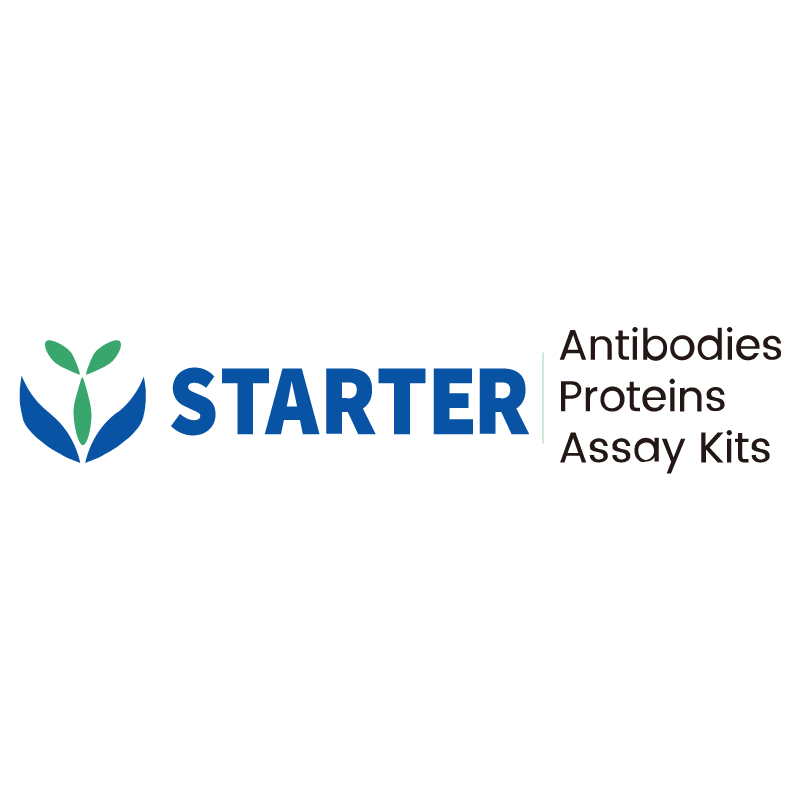WB result of TBR1 Recombinant Rabbit mAb
Primary antibody: TBR1 Rabbit mAb at 1/500 dilution
Lane 1: mouse heart lysate 20 µg
Lane 2: mouse brain lysate 20 µg
Negative control: mouse heart lysate
Secondary antibody: Goat Anti-rabbit IgG, (H+L), HRP conjugated at 1/10000 dilution
Predicted MW: 74 kDa
Observed MW: 80 kDa
This blot was developed with high sensitivity substrate
Product Details
Product Details
Product Specification
| Host | Rabbit |
| Synonyms | T-box brain protein 1, T-brain-1, TBR-1, TES-56 |
| Immunogen | Synthetic Peptide |
| Location | Nucleus |
| Accession | Q16650 |
| Clone Number | S-1102-34 |
| Antibody Type | Recombinant mAb |
| Isotype | IgG |
| Application | WB, IHC-P, IF |
| Reactivity | Hu, Ms, Rt |
| Purification | Protein A |
| Concentration | 0.5 mg/ml |
| Conjugation | Unconjugated |
| Physical Appearance | Liquid |
| Storage Buffer | PBS, 40% Glycerol, 0.05% BSA, 0.03% Proclin 300 |
| Stability & Storage | 12 months from date of receipt / reconstitution, -20 °C as supplied |
Dilution
| application | dilution | species |
| WB | 1:500 | |
| IHC-P | 1:500 | |
| IF | 1:500 |
Background
TBR1 protein, also known as T-box Brain Protein 1, is a transcription factor that plays an important role in brain development and function. It belongs to the T-box family of transcription factors, which are characterized by a conserved DNA-binding domain called the T-box. TBR1 protein is involved in the regulation of gene expression during neural development, specifically in the differentiation and maturation of cortical neurons. It is essential for the proper development of the cerebral cortex, a key region of the brain responsible for higher cognitive functions such as thinking, memory, and consciousness. In addition to its role in brain development, TBR1 protein has also been implicated in various neurological disorders and diseases. For example, mutations in the TBR1 gene have been associated with autism spectrum disorder (ASD) and other neurodevelopmental disorders. Furthermore, alterations in TBR1 expression have been observed in several neurological diseases, including schizophrenia and epilepsy.
Picture
Picture
Western Blot
WB result of TBR1 Recombinant Rabbit mAb
Primary antibody: TBR1 Rabbit mAb at 1/500 dilution
Lane 1: rat heart lysate 20 µg
Lane 2: rat brain lysate 20 µg
Negative control: rat heart lysate
Secondary antibody: Goat Anti-rabbit IgG, (H+L), HRP conjugated at 1/10000 dilution
Predicted MW: 74 kDa
Observed MW: 80 kDa
This blot was developed with high sensitivity substrate
Immunohistochemistry
IHC shows positive staining in paraffin-embedded human cerebral cortex. Anti-TBR1 antibody was used at 1/500 dilution, followed by a HRP Polymer for Mouse & Rabbit IgG (ready to use). Counterstained with hematoxylin. Heat mediated antigen retrieval with Tris/EDTA buffer pH9.0 was performed before commencing with IHC staining protocol.
Negative control: IHC shows negative staining in paraffin-embedded human tonsil. Anti-TBR1 antibody was used at 1/500 dilution, followed by a HRP Polymer for Mouse & Rabbit IgG (ready to use). Counterstained with hematoxylin. Heat mediated antigen retrieval with Tris/EDTA buffer pH9.0 was performed before commencing with IHC staining protocol.
IHC shows positive staining in paraffin-embedded mouse E14.5 cerebral cortex. Anti-TBR1 antibody was used at 1/500 dilution, followed by a HRP Polymer for Mouse & Rabbit IgG (ready to use). Counterstained with hematoxylin. Heat mediated antigen retrieval with Tris/EDTA buffer pH9.0 was performed before commencing with IHC staining protocol.
IHC shows positive staining in paraffin-embedded mouse cerebral cortex. Anti-TBR1 antibody was used at 1/500 dilution, followed by a HRP Polymer for Mouse & Rabbit IgG (ready to use). Counterstained with hematoxylin. Heat mediated antigen retrieval with Tris/EDTA buffer pH9.0 was performed before commencing with IHC staining protocol.
Negative control: IHC shows negative staining in paraffin-embedded mouse liver. Anti-TBR1 antibody was used at 1/500 dilution, followed by a HRP Polymer for Mouse & Rabbit IgG (ready to use). Counterstained with hematoxylin. Heat mediated antigen retrieval with Tris/EDTA buffer pH9.0 was performed before commencing with IHC staining protocol.
IHC shows positive staining in paraffin-embedded rat cerebral cortex. Anti-TBR1 antibody was used at 1/500 dilution, followed by a HRP Polymer for Mouse & Rabbit IgG (ready to use). Counterstained with hematoxylin. Heat mediated antigen retrieval with Tris/EDTA buffer pH9.0 was performed before commencing with IHC staining protocol.
Negative control: IHC shows negative staining in paraffin-embedded rat liver. Anti-TBR1 antibody was used at 1/500 dilution, followed by a HRP Polymer for Mouse & Rabbit IgG (ready to use). Counterstained with hematoxylin. Heat mediated antigen retrieval with Tris/EDTA buffer pH9.0 was performed before commencing with IHC staining protocol.
Immunofluorescence
IF shows positive staining in paraffin-embedded mouse E14.5 cerebral cortex. Anti-TBR1 antibody was used at 1/500 dilution (Green) and incubated overnight at 4°C. Goat polyclonal Antibody to Rabbit IgG - H&L (Alexa Fluor® 488) was used as secondary antibody at 1/1000 dilution. Counterstained with DAPI (Blue). Heat mediated antigen retrieval with EDTA buffer pH9.0 was performed before commencing with IF staining protocol.


